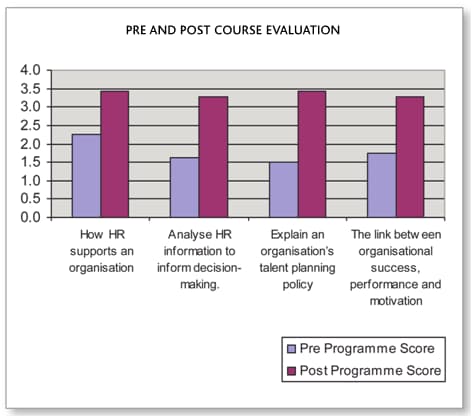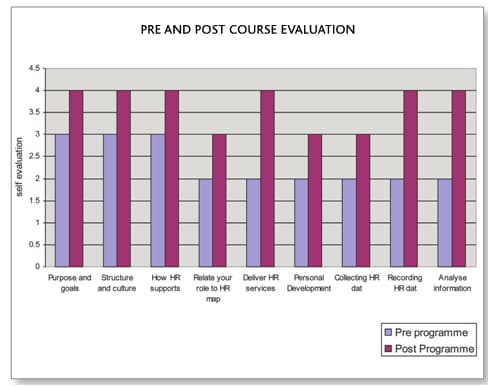The old cliché about the role of HR getting ‘the right people in the right place at the right time’ and then engaging, developing and retaining them, is as true today as it ever was.
While most organisations have realised the business benefits of sharing people responsibilities with managers and leaders, the strategies, processes and policies in place to attract, recruit, train, reward and performance manage an organisation’s workforce remains the core role of HR and L&D.
It is, therefore, logical to have a strategy in place specifically for the attraction, retention and development of your HR and L&D teams.
Building the best HR and L&D teams
Successful organisations have flexible and adaptable teams which can respond to external factors with pace, and drive forward change when investment decisions have been made. Evaluate your team strengths using tools such as MBTI and Belbin and fill team role gaps at the next opportunity to build a team with a range of skills.
Make sure you have at least one team member who is highly numerate and an Excel expert who can help you develop the tools and measures to track HR and Learning contribution in-house. But don’t spend too long on it! Don’t put off getting on with the key job of trying to improve performance, quality, etc.
Stephen Taylor, author of Contemporary Issues in Human Resources Management, believes the business case is very clear: “Investment decisions and hence the value of company shares are increasingly made using non-financial information. Analysts advising investment decision makers are interested in the relative ability of organisations to attract and retain talented individuals.”
With such a strong case for building the best people teams in the private sector, it’s a logical argument in favour of investing in the HR and L&D teams in the public and other sectors too.
Measuring HR and L&D contribution
“Accurately evaluating the HRM contribution to organisational performance in financial terms has always been problematic. This is because so many of the outcomes are intangible and difficult to isolate…but this should not stop us from seeking to quantify the value that is added,” says Stephen Taylor.
Some sophisticated and complex audit tools have been developed by management consultants. These are expensive and while they may be able to help organisations predict trends in the performance of their people teams, they mainly measure past practice.
There is a danger that attempting to measure the ROI of HR and Learning can become an industry in itself. We should not lose sight that it is a means to an end. We encourage organisations to find straightforward formulas which HR and non-HR people can understand and trust.
For example: profit generated per employee (FTE) and per team, employee costs as a proportion of total costs (overall and by department). Organisations measuring the effectiveness of L&D interventions using business metrics such as profitability, revenue and market growth, rose from 38% in 2013 to 54%in 2013 (source: CIPD L&D Survey 2014).
Use these and other standard KPIs such as voluntary staff turnover, diversity statistics, number of disciplinary and grievance cases. Your people teams should be able to identify and articulate their contribution.
A recent US study (Bloom, Sadun, and Van Reenen) looked directly at the impact of management quality on employee productivity. Using data collected from over 20,000 employees in a large technology-based services company, the authors concluded that the average supervisor was 1.75 times as productive as the average employee. Moreover, if a manager judged to be in the bottom 10% of the ability distribution was replaced by a manager in the top 10% of the ability distribution, the impact on output was about the same as adding an extra member to an existing nine-person team (source: CIPD Megatrends December 2014).
We should not discount the less tangible benefits which can be so much harder to quantify. We should seek out ways of capturing to what extent stakeholders’ expectations have been met through HR and Learning interventions to supplement the metrics that we are more comfortable with. Indeed investment decisions can be made on that ‘expectation’.
“Where such stakeholders have high trust that learning and development will add value they are less concerned to micro- manage learning efficiency,” Stewart and Rigg, Learning and Talent Development.
The most powerful indicators of people team performance can be derived from correlating the performance ratings of HR and L&D individuals and teams to business performance. This not only highlights best practice and areas for development but also serves to engage both sides of the equation with exciting and motivational new data.
Over time such meaningful statistics can become an excellent internal benchmark. Through our work with organisations in a range of sectors we have witnessed the difference such investment in HR and L&D can make. Here are just a few examples:
Centrica HR Talent board
The Centrica HR Programme aims to maximise the potential of their people in order to meet the strategic challenges facing the business and ensure Centrica continues to be recognised as a ‘Great Place to Work’.
Centrica looks to develop driven, passionate and innovative graduates to become the HR Directors of the future. Their three-year HR Graduate Programme comprises one three-month placement and four nine-month placements. Graduates work across different parts of the Centrica Group and build a portfolio of skills through a breadth of experiences across a number of HR disciplines:
Professional development is supported by an HR Talent Board with opportunities for Graduates to raise their profile with HR Directors and business leaders. Graduates are supported in order to gain a CIPD qualification and/or Masters in HRM (source: Centrica website). Those who choose Reed Learning are provided with a uniquely tailored programme using a blend of one-to one support, workshops, webinars and Skype meetings.
Centrica recognises that outstanding people skills need to be complemented by strong analytical skills and flexibility. On completion of the programme, Graduates know how a first-class HR function operates and capable of delivering change as innovative strategic HR professionals.
Case study: Simon O'Farrell, Centrica energy
When Simon joined Centrica as a Head of HR in 2010, the notion of qualifications was in the distant past. “However, working through my first year objectives it became obvious that I needed to strengthen my experience with a formal, advanced-level qualification. The business wanted to develop a career plan that would allow me to grow across the organisation, and becoming CIPD qualified was essential.”
Simon’s enquiries coincided with new CIPD qualifications which are attainable largely through competency-based assessment. “This was ideal for me,” he says, “because it meant I could fit the programme in with a busy work schedule without it being too arduous.”
Crucially for Simon, is the fact that the programme isn’t just about building knowledge as there is equal weight given to assessing what he can already do. “The learning process is more relevant to the context. I’ve certainly found new opportunities to apply best practice to parts of the business I am responsible for.”
RBS HR graduate development
RBS developed an HR Graduate Scheme to match their schemes in other parts of the business. As a result they have attracted highly talented individuals who are capable of contributing to recruiting, engaging, developing, rewarding and transforming RBS (source: RBS website). The HR Graduate population provides a pipeline of new talent to the HR function and helps diversify HR thinking and skills.
Through a CIPD Advanced Diploma programme which has been specially tailored for RBS graduates the company is able to accelerate the skills development of the group, helping them demonstrate the value they add to become trusted HR professionals of the highest calibre.
People academy (UK supermarket)
The aim was to build the capability, confidence and credibility of the HR function by investing in them through the provision of CIPD accredited development, using the CIPD Profession Map as a robust framework.
The impact of the L&D intervention was measured through a pre and post programme questionnaire based on key knowledge areas of the CIPD Profession Map.
The scores are average evaluation scores from participants, scoring their skills from 1=no knowledge to 4=competent and confident (see chart, below).
Liz Rivers, Academy & Leadership Programmes Manager at Asda, said: “The main objectives of the HR Fundamentals programme was to build capability, confidence and credibility of the HR function and to invest in our colleagues by providing CIPD accredited development. The programme delivered against each of these. The CIPD profession map provided a robust framework for our ‘People People’ to both articulate and develop their understanding and delivery of HR practice. Participants completed a self assessed learning diagnostic pre and post programme, to measure competence in nine knowledge areas based on CIPD associate level membership criteria. Average evaluation scores for each area increased by at least 25%. A greater depth of knowledge was seen in areas of: HR services delivery, recording HR data and analysing information. This has resulted in a pool of dedicated, engaged HR professionals who can share their learnings with others and act as role models throughout the organisation.”
Global drinks company
This programme was designed for an international team based in the UK. The aim was to equip individuals from the people team to be immediately operational as part of their fast track succession plan process. The results speak for themselves:

Latest technology
There is a body of evidence about harnessing latest technology and using social media. Our slightly different slant is to highlight the main outcome of recent technology trends is the increase in personal contact using tools that don’t require people to be in the same space.
We are seeing a huge increase in the use of virtual meetings, webinars, Skype, FaceTime, etc., which optimise time and efficiency, minimise cost while maximising people contact. This is not only for learning and development purposes, but for all aspects of Business As Usual.
Social media means people spend more time communicating with their network of contacts than ever before. Distance is no longer a barrier to communications.
HR and L&D teams are often driving these trends to increase contact through use of technology and measuring contribution people make to the bottom line.
Instead of HR and L&D being considered the poor relation of the core business, getting the best people in place in HR and L&D will result in getting the best for the rest.




